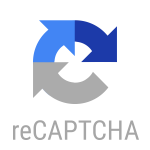
A Full Stack Web Developer is the person who has knowledge regarding the areas such as Coding, version control system, databases, website speed, repository among others to work on both the back-end as well as the front-end portions of a web application.
There are various skills which are required for a Full Stack Web Developer that ranges across multiple fields. Below mentioned are the some of the most important fields:
#1 Front-end development
Article Contents
A Full Stack Web Developer within the front-end development field is required to deal with the parts of the application that the users can see as well as interact with. The technologies in which the developer needs to have expertise in, are:
- React.Js – React.Js is an open-source library of JavaScript utilised to for building interfaces for the user especially for the mobile and web applications like Instagram, Uber etc. It also helps the developer to create components for the UI which can be reused. Learn install React js
- Angular.Js – AngularJS is a structural JS framework for building web applications which are dynamic in nature and uses HTML as the primary language for template. It also uses the basic HTML syntax for expressing the components of the application clearly.
- Vue.Js – Vue.js is an important software technology within the JS framework, that is being constantly used by the front-end developers to make the applications look more attractive and user-friendly as well as helps to make the application a lot faster.
- Next.Js – Next.js is another JS framework which lets the developer to build the static web applications such as various news applications and food applications, as well as helps to build the server-side rendering. Know which is best Next.js or React Js
#2 Back-end development
Developer in this field handles the various back-end operations such as database operations, application logic as well as user authentication. Main languages used by the developers include:
a) Node.Js – This is an open-source JS framework which contains a built-in library for allowing applications to run as a web server without utilising external software such as IIS or Apache HTTP server. Download NPM and install node js
b) Ruby on Rails – This is a popular web application framework used by most of the tech companies including Airbnb, Amazon and Bloomberg among others. It is an open-source framework and uses Ruby programming language.
c) PHP – PHP is the scripting language for the server-side development and is pre-installed in numerous hosting sites. This framework makes the applications more supple and instinctive.
d) Laravel – it is one of the most popular PHP frameworks which can be used for basic scripting as well as developing vast enterprise applications.
#3 Web server technologies
- Apache – This is an opensource web server that runs number of web services and has played a crucial role during the early stages of the internet growth.
- NGINX – This is also an opensource software which is utilised for serving the websites and also used for caching, reverse proxying as well as load balancing and streaming of the media on the web applications.
#4 Databases
- MySQL – It is the most popular opensource database which is reliable and easily accessible to the developers. This relational database software is free, performs faster as well as easy to setup.
- Postgre SQL – It is also an opensource relational system of database which is known to be powerful and has a strong status for being integral to the data as well as its correctness and reliability.
- MongoDB – This is an opensource and free NoSQL database system which saves the data in the form of binary JSON, hence making it easier to convey data between the client as well as the server.
- Redis – Redis is an open source, in-memory data structure store, used as a database, cache and message broker. It supports data structures such as strings, hashes, lists, sets, sorted sets with range queries, bitmaps, hyperlogs, geospatial indexes with radius queries and streams.
#5. Local development Environments
MAMP – This is a free local development environment which can easily installed with few clicks within MacOS and Windows. It provides with all the necessary tools to the developers for easy testing and runtime purpose. There is more tools such as XAMPP or WAMP for setup local environments .
#6 Website speed test tools
- Google insights – Google page-speed insights is a tool for web performance to analyse the speed as well as the content within the set of metrics by the developer.
- GTmetrix – it is a free tool which provides the analysis of a webpage speed and performance by inputting the site’s URL on their website.
#7 Web development communities
Stack overflow – It is one of the largest technological forum where the users and developers can learn and share their experiences as well as their coding on a particular software development.
#8 Git clients and services
GitHub – GitHub is a Git repository hosting service, but it adds many of its own features. While Git is a command line tool, GitHub provides a Web-based graphical interface. It also provides the developers with the added perks of a unified cross-platform experience which is entirely opensource and customizable.
#9 Hosting
- VPS – VPS is short form for a Virtual Private Server. VPS hosting is one of the most prevalent hosting services that one can opt for their website. It utilises virtualization technology to provide with dedicated or individual resources on a server with numerous users. However, the cost of using VPS can be quite high.
- Shared hosting – Shared hosting is one of the most prevalent hosting possibilities for those who are building out their first websites. Shared hosting allows multiple websites to utilize a single server. It is by far the cheapest and cost-effective hosting option that developers are going to have available.
- Cloud dedicated server – Cloud Dedicated exist as a piece of software running on a parent server with the hypervisor managing them. The virtual servers are clustered together under Liquid Web’s Cloud Platform. Users can move server instances between parent servers without needing to migrate data or reconfigure the server settings. Some of the major cloud-based services include Microsoft Azure, Amazon Web Services among others.



